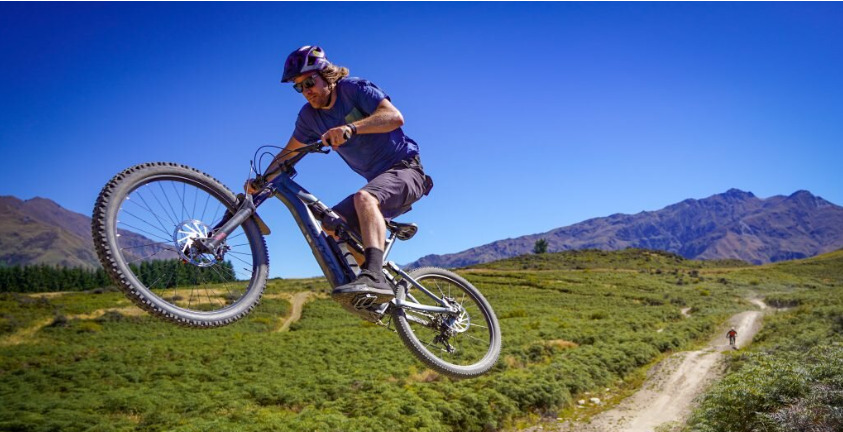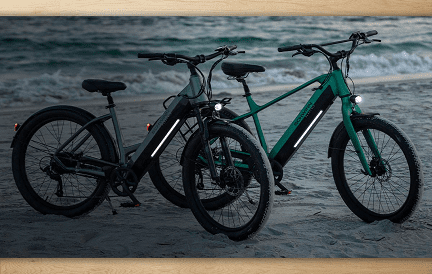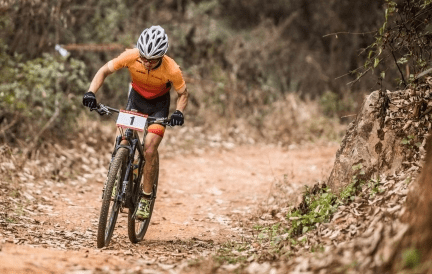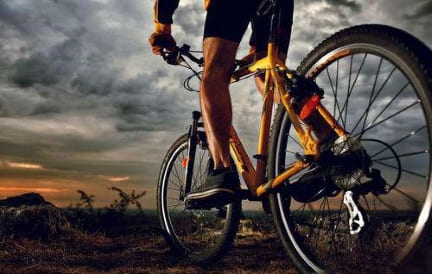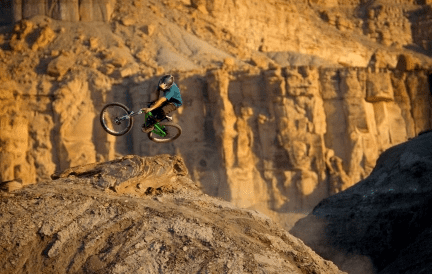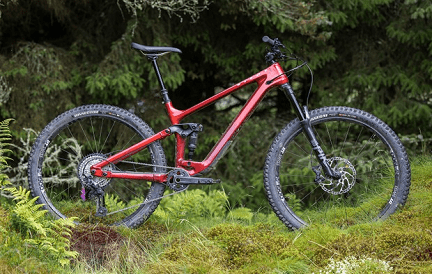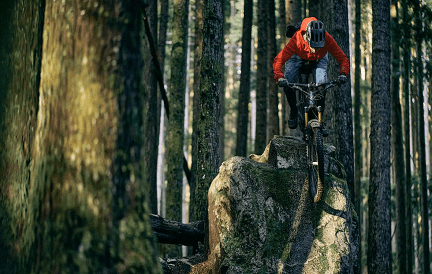The 29inch bicycle began to dominate the market a few years ago. “26 ain’t dead” rapidly became the doubters’ hymn – and, as it turns out, a dying anthem. At this time, I believe it is safe to declare the 26-inch wheel dead. Why? Because 29ers have demonstrated their superiority. This is why.
- Part 1: What is 29er
- Part 2: Benefits
- Part 3: What is a 29er Bike Used For
- Part 4: History of 29er Bikes
- Part 5: Who Should Use a 29er Bike
- Part 6: Environmental Impact of Using a 29er Bike
- Part 7: What to Wear When Riding a 29er Bike
- Part 8: Conclusion
Part 1: What is 29er
Many people may be perplexed as to why these bikes are referred to as 29er bikes. This is why.
Mountain bikes and hybrid cycles with 700c or 622 mm ISO (inner rim diameter) wheels, generally known as 29″ wheels, are known as 29ers or two-niners. Most mountain bikes utilized ISO 559 mm wheels, sometimes known as 26″ wheels, in the past. Road bikes, trekking bikes, cyclocross bikes, touring bikes, and hybrid bikes all utilize the ISO 622 mm wheel. ISO 622 mm wheels are known as 28″ wheels or “28 Incher” in several areas, mostly in Continental Europe.
Part 2: Benefits
While 29-inch wheels may not be ideal for every style of riding or every rider, the evidence shows that they offer significant advantages in some elements of mountain biking. What precisely are the advantages?
Rollover ability: The assault angle, or the angle generated when a circular item collides with a square object, can be used to estimate a wheel’s rollover ability. Because of their bigger diameters, 29-inch wheels have a shallower attack angle, allowing them to roll over trail hazards such as rocks and roots with less impact. If all else is equal, riders on 29inch bicycle will enjoy a smoother ride and endure less tiredness from hard-hitting bumps.
Grip: The circumference of 29-inch wheels is greater, resulting in a tire with more surface area and a wider contact patch with the ground. When equivalent tread patterns and widths are compared, 29ers give higher traction than smaller wheels.
Speed: While smaller wheels have a modest edge when it comes to acceleration, the momentum generated from higher rolling inertia allows 29-inch wheels to carry more total speed. On wide terrain, this means 29ers cover more distance with less effort and make it easier to reach greater speeds.
Stability: 29inch bicycle maintain their lines very well thanks to enhanced rollover power and traction. The bike seems more predictable in harder terrain with less jarring impacts from objects and a greater connection to the path.
Part 3: What is a 29er Bike Used For
Mountain biking disciplines and competitions employ 29ers in both leisure and competitive settings.
29-inch mountain bikes are one of the most popular kind of mountain bikes, and many elite mountain bike racers choose them.

Amateurs and newbies to mountain biking can benefit from the enhanced grip and stability of 29ers, which are suitable for intensive competition cycling.
29ers are also quite adaptable. You’d be hard-pressed to find a 29er that couldn’t handle the terrain, making them an excellent choice for riders interested in a variety of MTB disciplines.
However, 29ers must have some disadvantages, right? Continue reading to learn about the benefits and drawbacks of riding a 29er.
Part 4: History of 29er Bikes
Mountain biking quickly achieved international appeal after beginning as a fringe sport in the 1970s. MTB made its Olympic debut in Atlanta in 1996, featuring cross-country races for both men and women.
Mountain bikes were not quite as advanced as they are now at the time. Hardtail MTBs were the standard, and Wilderness Trail Bikes didn’t produce the first real 29er until 1999.
Julien Absalon, a French mountain cyclist, made headlines when he was one of the first MTB pros to use 29-inch wheels on more difficult courses in the early 2010s.
All major contests and mountain biking events around the world now feature 29ers and 27.5 bikes.
Part 5: Who Should Use a 29er Bike
As you’ve seen, 29er mountain bikes provide a variety of advantages that make them perfect for both total novices and seasoned MTB riders.
A 29er’s smoother, less jerky ride makes it an ideal choice for individuals who want to ride less strenuous routes.
A 29er, on the other hand, will serve you well and soak up the large impact landings if you’re seeking to reach bi air on tough downhill routes. As previously said, 29ers are excellent all-arounders that will help you gain confidence before moving on to more challenging terrain and rides. A full-suspension 29er is your best choice if you want a mountain bike that can do it all.
Are 29ers Only For Tall People
Because of the larger wheel diameter and higher riding position of a 29er, many shorter MTB riders ask how tall they need to be to ride one securely.
How Tall Do You Have to Be to Ride a 29er
So, if you’re wondering how tall you need to be to ride a 29er, the answer will vary depending on the bike you’re considering.
EWS riders like Dimitri Tordo (4th Overall EWS 2019 – Canyon Collective) have shown that 29ers aren’t just for the tall.
If you’re shorter than 5’6′′, though, a 27.5 or 26-inch wheel may be more comfortable to ride.
You’ll be able to locate a 29er bike that suits you well if you’re 5’6′′ or taller.
To answer your question, mountain bikers interested in riding a 29er should be at least 5’6′′ tall. Remember to test ride various bikes before deciding which one is the greatest match for your height.
So who should consider buying a 29er mountain bike? Here’s what they’re best for:
Technical Climbs
– Because 29 inch wheels have a more advantageous angle of attack, they require less momentum to roll over obstacles. As you approach tricky elements on steeper climbs, you’re more likely to lose speed and momentum. The benefit of larger wheels will assist you in propelling yourself forward and making it up those difficult climbs. The advantages of a 29er are crucial if you bike trails with steep, tricky climbs.
On descents, the bike tracks better and is more predictable when striking rocks and roots has less of an impact. That means that when you’re riding a 29er through a rock garden, you’ll feel more secure since your wheel will keep its line with assured confidence. If you like to power over downhill obstacles rather of negotiating around and through them, 29ers can assist you.
Traction on Slick Surfaces
As previously stated, a greater contact patch with the ground equals better trail grip. You’ll need all the traction you can get, especially while riding over rough terrain. Do you enjoy riding on routes that include slick roots and rocks? What about sandy, loose gravel? If you do, you’ll appreciate how may help you climb and corner faster and more confidently.
Speed and Efficiency
29-inch wheels have a bigger diameter that allows them to carry their momentum more effectively and attain faster speeds. You’ll appreciate how rapidly 29inch bicycle can cover territory whether you race cross country or just want to get the maximum distance out of each pedal stroke.
Part 6: Environmental Impact of Using a 29er Bike
Only authorized trails should be utilized with 29t bicycle. Outside of specified locations, riding a mountain bike can be damaging to local animals and vegetation.
If you commute on your 29t cycle, you’ll benefit from the extra environmental advantage of lowering your carbon footprint!
Part 7: What to Wear When Riding a 29er Bike
In the elements, riding a 29er bike across a mountain course may be challenging. As a result, you’ll want to dress appropriately and carry appropriate safety equipment to keep yourself safe and comfortable.
The weather might also influence what you wear when riding a 29r mountain bike. Riding in the colder months or at higher altitudes may need layering of clothing for best comfort.
29er Mountain Bike on Dusty Trail
You might wish to invest in the following items of clothing:
- Shorts or pants with pads or padded liners
- Biking jersey that wicks moisture
- Thermal layers
- Pedal-compatible footwear
- Gloves (fingerless or full)
When riding a 29r mountain bike, what accessories are recommended?
Aside from helmets and other safety gear (discussed below), 29er mountain bikes have a plethora of accessories.
These include:
- Bike repair kits
- Portable tire pumps
- GPS trackers and fitness monitors
- Saddlebags
- Lights;reflective clothing
- Hydration bladders
- Backpacks
- Bike locks
There are many different types of protective gear to choose from. A helmet is an essential piece of safety equipment. Other possibilities include:
- Full face helmets
- Chest and back armour;bracing
- Elbow & knee pads
- Protective UV glasses/goggles
- First aid kits
Consider your helmet to be a distinct bicycle component. Bike locks should be handled in the same way.
Invest in a high-quality bike lock if you value your bike and don’t want it to fall into the wrong hands.
Performance
The benefits and drawbacks of 29ers are frequently argued in the mountain biking world. [untrustworthy source?] The extra weight, perceived sluggishness in handling, and fit issues (particularly, front wheel/toe overlap and high standover height) are all disadvantages of the 29″ wheel. Reduced rolling resistance, perceived increased stability while maintaining rapid handling, and improved ability to roll over obstacles are all advantages.
The size and form of the tire contact patch is a common topic of discussion. When all other factors are similar, such as tire width, rim width, inflation pressure, and rider weight, the contact patch of a 29″ wheel has the same area as a 26″ wheel and is slightly longer (5%).
Advantages
Larger wheels have an easier time rolling over obstacles. The size of a wheel determines its capacity to roll over obstacles. A 29-inch wheel, which is 10% bigger than a 26-inch wheel, can roll over 10% more obstacles.
Larger diameter wheels have greater angular momentum, so they lose less speed to obstacles and rough parts, but larger tires can have the same result.
The frame geometry of 29inch bicycle is more “natural” for taller riders. Tires having a larger diameter and broader tread pattern, as well as higher air pressure, flatten less near the ground contact region.
The same high tension pressures are applied to all spokes. The tension of all the spokes does not rise much as the wheel rotates on a bicycle with a rider; instead, only the spokes directly under the hub lose tension. The spokes directly under the hub drop their tension less under load for tires that flatten less under load, exposing the spokes to more constant tension. The spokes last longer before breaking due to fatigue.
The majority of these allegations have yet to be thoroughly explored. Small-scale, unreported studies exist (including one conducted at Gary Fisher’s request)[citation needed], but both supporters and opponents of 29″ wheels are usually unsatisfied with their scientific validity. [Like who, exactly?] Long disputes have raged online over how to perform a “fair” test of the efficiency of 29″ vs. 26″ mountain bikes, but no genuine attempts to conduct a large-scale, scientific research have been done.
Drawbacks
Increased wheel weight (bigger tire, tube, rim, and spokes) slows wheel response to acceleration and braking while also adding unsprung mass.
A wheel with longer spokes and a lower angle between the hub flange and the rim is more laterally flexible (ceteris paribus).
Because of the larger wheelbase and heavier front wheel, the handling is less sensitive.
Smaller riders (those under 5’5″ (=165 cm) tall) may have major geometry compromises, such as toe overlap, high handlebar height, and reduced standover clearance.
Part 8: Conclusion
You should now have a better idea of the advantages a 29-inch mountain bike may provide.
I hope I’ve addressed all of your concerns about the 29er. If not, please leave a comment below and I will respond as soon as possible.
A 29er mountain bike, in case you didn’t know, is a mountain bike with 29-inch wheels!
Last but not least please take mountain biking precautions seriously. Stay healthy, stay safe while biking!

